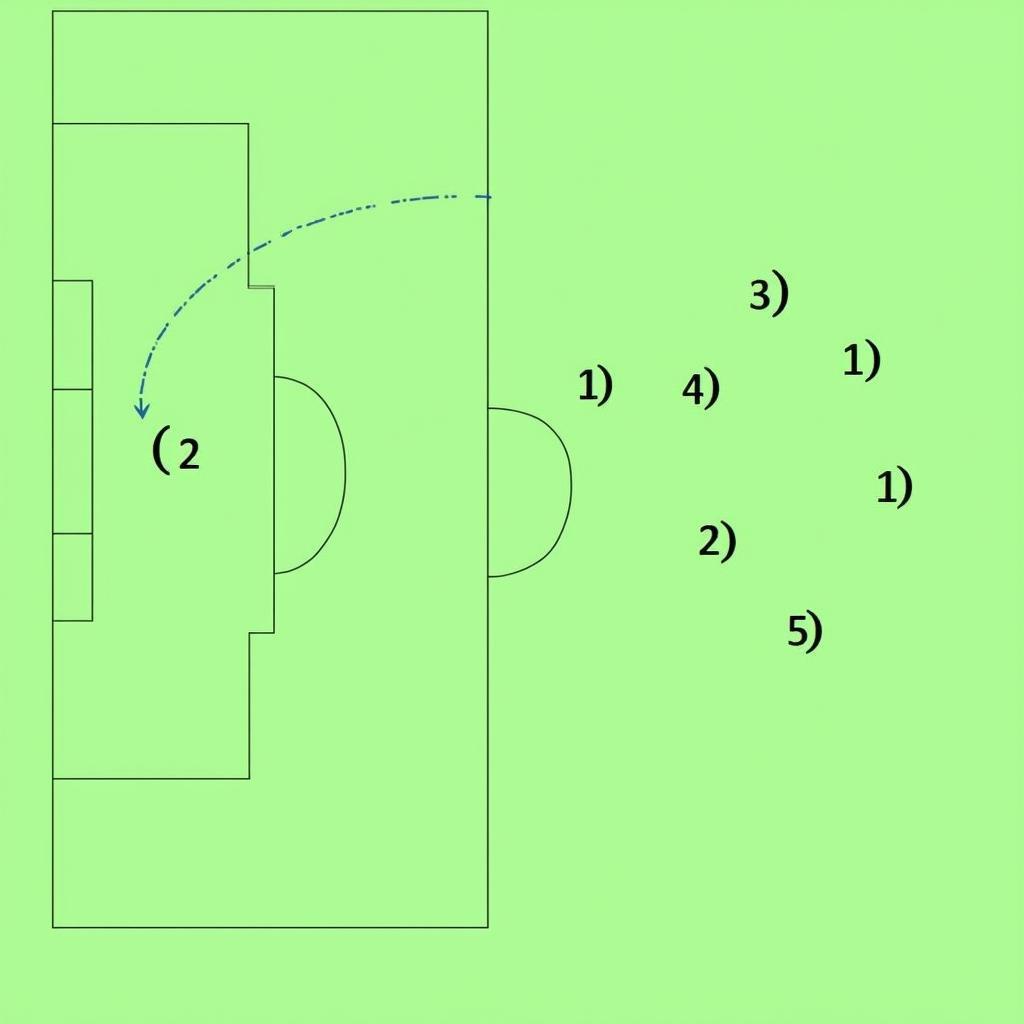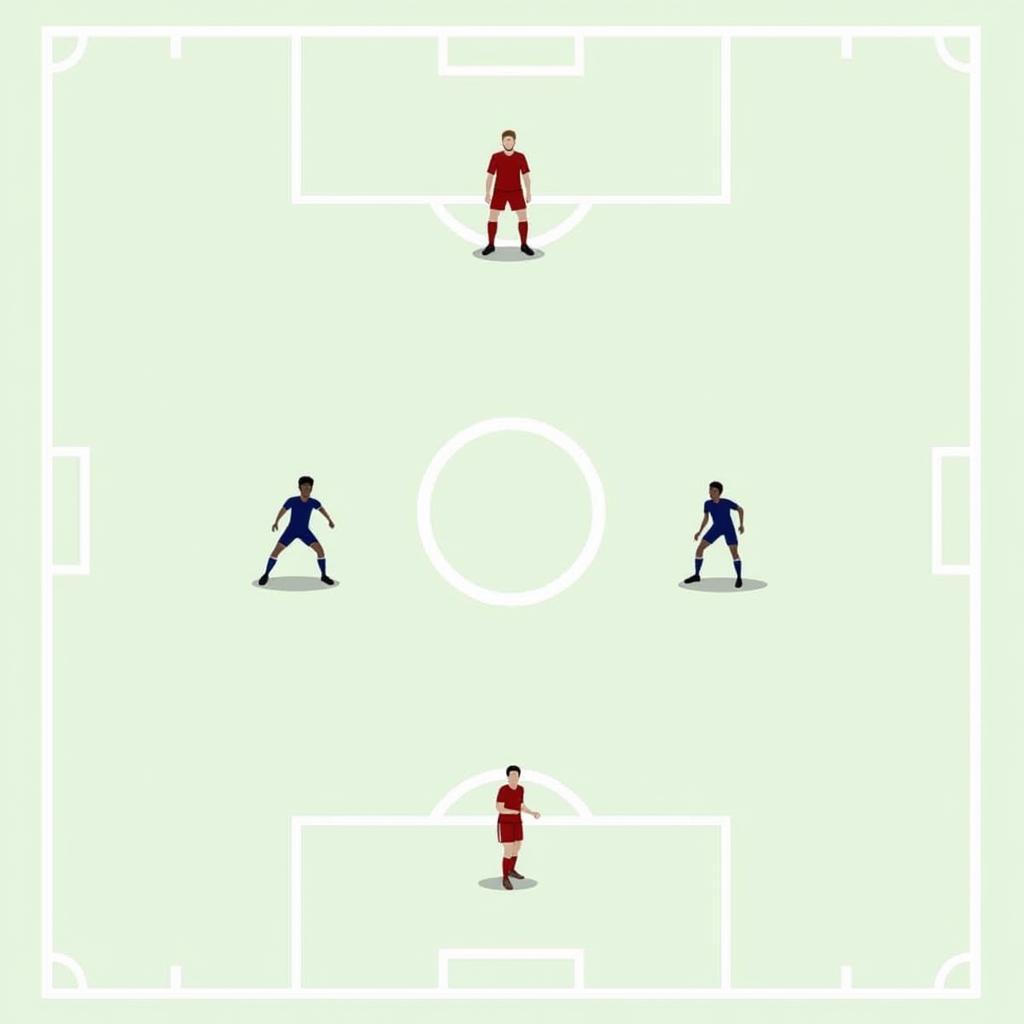Doubles formations in football are a tactical approach designed to overload specific areas of the pitch, creating numerical advantages and disrupting the opposition’s defensive structure. Understanding these formations, their strengths, weaknesses, and effective implementation can significantly impact a team’s performance.
Decoding the Dynamics of Doubles Formations
Doubles formations involve positioning two players close to each other, typically in midfield or attack, to create passing options, exploit space, and overwhelm defenders. This tactic can be particularly effective in youth football, where players are still developing their tactical awareness and positioning. However, even at professional levels, variations of doubles formations can be observed, especially to counter specific opponents or exploit weaknesses.
Types of Doubles Formations
Several variations of doubles formations exist, each with its own unique strengths and weaknesses. Let’s explore some common examples:
-
Double Pivot: This formation utilizes two defensive midfielders positioned centrally, providing a strong defensive screen and initiating attacks. It offers excellent control of the midfield but can lack creativity in the final third if not implemented correctly.
-
Double False Nine: A more attacking approach, this formation features two forwards who drop deep into midfield, creating confusion for defenders and opening space for attacking midfielders to exploit. While it can be highly effective against teams with a high defensive line, it requires intelligent movement and passing to be successful.
-
Wide Doubles: Deploying two players down either flank, often a winger and an overlapping full-back, allows teams to create overloads on the wings, leading to crosses and cutbacks into the box. However, this tactic can leave the central areas vulnerable if the opposition counter-attacks quickly.
 Wide Doubles Formation in Football
Wide Doubles Formation in Football
Advantages of Doubles Formations
The effectiveness of doubles formations stems from their ability to:
-
Create Numerical Superiority: By positioning two players close together, teams can outnumber the opposition in specific areas, creating passing triangles and opportunities for quick combinations.
-
Disrupt Defensive Shape: The movement and interplay of two players in close proximity can confuse defenders, pulling them out of position and creating gaps in the defensive line.
-
Increase Passing Options: With a teammate nearby, players have more passing options, reducing the risk of turnovers and enabling quicker ball circulation.
 Double Pivot Midfield Formation
Double Pivot Midfield Formation
Disadvantages of Doubles Formations
While doubles formations offer several advantages, it’s essential to be aware of their potential drawbacks:
-
Predictability: If not implemented with creativity and variation, doubles formations can become predictable, allowing the opposition to anticipate passes and intercept the ball.
-
Space Limitation: Positioning two players close together can limit their individual space and restrict their movement, particularly if the opposition is well-organized defensively.
-
Vulnerability to Counter-Attacks: If the doubles formation is not supported adequately by other players, the team can be vulnerable to counter-attacks, especially if the ball is lost in a dangerous area.
Implementing Doubles Formations Effectively
To maximize the effectiveness of doubles formations, coaches and players should consider the following:
-
Player Selection: Choose players with good technical skills, tactical awareness, and the ability to make quick decisions.
-
Movement and Rotation: Encourage players to move fluidly and rotate positions within the doubles formation to create confusion and exploit space.
-
Communication: Effective communication is crucial for ensuring players understand their roles and responsibilities within the doubles formation.
Conclusion
Doubles formations in football offer a potent tactical tool for teams looking to create numerical advantages, disrupt defensive structures, and enhance attacking play. By understanding the different variations, advantages, and disadvantages, and by implementing them effectively, teams can significantly improve their chances of success on the pitch. Remember that mastering doubles formations, like any tactical approach, requires practice, communication, and adaptability.
FAQ
- What is the main purpose of using a doubles formation?
- What are the common types of doubles formations used in football?
- What are the potential drawbacks of using doubles formations?
- How can coaches and players effectively implement doubles formations?
- Are doubles formations more effective in youth football or professional football?
- Can doubles formations be used in different areas of the pitch?
- What player qualities are important for successfully executing a doubles formation?
Need more help? Contact us at Phone: 0902476650, Email: [email protected] Or visit us at: 139 Đ. Võ Văn Kiệt, Hoà Long, Bà Rịa, Bà Rịa – Vũng Tàu, Việt Nam. We have a 24/7 customer support team.





